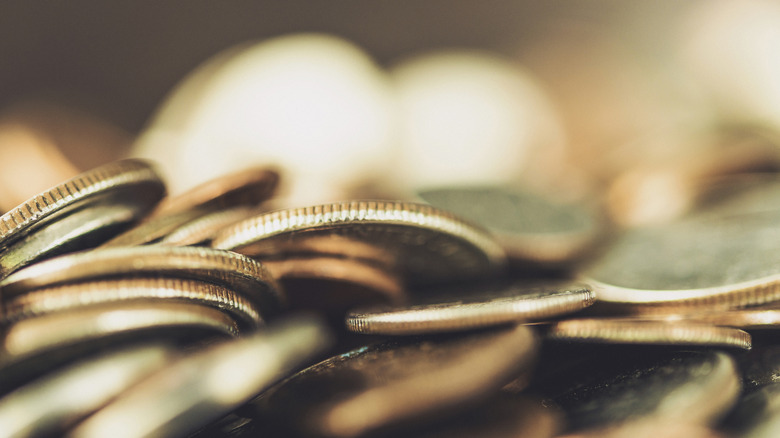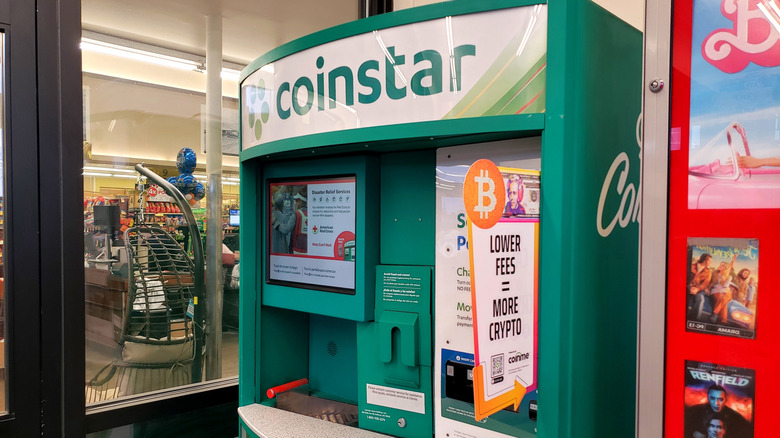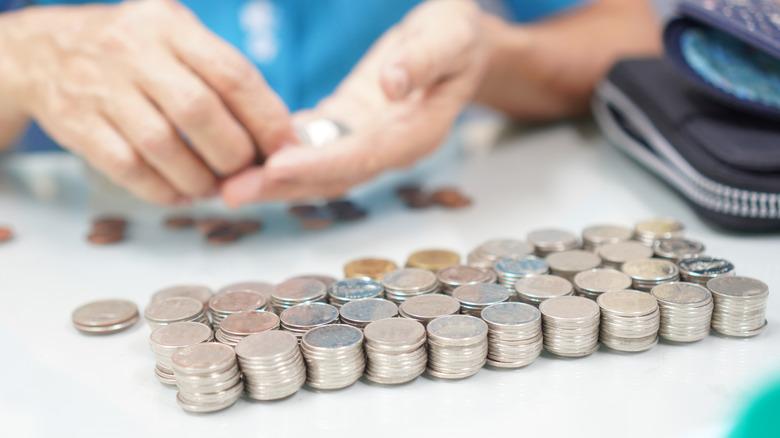The Accuracy Of Coin Machines Might Surprise You
We may receive a commission on purchases made from links.
Coin counting machines can make handling loose change fast and easy, without the hassle of counting by hand. They work by scanning the size, weight, and even magnetic properties of coins in order to sort and calculate totals in just minutes. Once counted, the machine gives a final value, with many machines offering you the choice of how to receive the total – most offering to convert the total into cash or a digital voucher. This makes coin counting machines useful for anyone looking to turn piles of coins into usable money for things like vacations. You can often find these machines in banks, supermarkets, credit unions, laundromats, and even inside stores like Walmart. With that said, some machines do more than simply count, with newer models able to connect to digital platforms — allowing you to deposit your money directly into a bank account or even donate the spare change to charity.
However, in addition to keeping you from spotting rare coins in your spare change, coin counting machines have also faced criticism for their inaccuracies. While brands like Coinstar claim near-perfect accuracy, the reality can be much different. Plus, it's important to realize that not all machines count the same. This compounds when you realize there aren't strict rules in every state to make sure these machines are always accurate unlike, say, gas pumps, which get regular inspections.
Accuracy of coin counting machines
Coin counting machines are built for accuracy, but their performance depends on a few factors. For starters, most machines don't rely on just one method to identify coins. Instead, they use a mix of weight sensors, electromagnetic detection, and optical scanners in an effort to reduce errors — especially with worn or dirty coins. This multi-layered verification system helps keep miscounts to a minimum. Still, errors abound. A July 2024 study, by Consortia Academia, tested a popular automated coin-counting machine to see how well it performed in speed, accuracy, and ease of use. The results were promising — the machine was highly effective at counting coins, identifying different denominations, and providing a smooth user experience. Participants in the study rated its accuracy and detection capabilities highly, giving it an average score of 3.46 out of 4.
However, there was one clear issue with these machines — worn and dirty coins still cause errors. The study found that while advanced sensors and programming helped improve accuracy, the physical condition of the coins made a significant difference in how well the machine performed. The takeaway is that, even with high-tech improvements, coin counters still work best when the coins being inserted are clean and in good shape. For example, a pebble or token mistakenly fed into a machine can trigger miscounts or jams. So, as a coin counting machine user you play a significant role in the machine's accuracy.
Best practices for coin counting machines
If you want your coin counting experience to go smoothly, it helps to do a little prep work first. Start by cleaning your coins and make sure to double-check for any non-coin items like buttons, tokens, or random bits of metal. You don't have to sort your coins by type, but doing so might help you spot anything weird or damaged before it hits the machine. If you have coins that are bent or corroded, your best bet is to take them straight to the bank or spend them directly.
It's also smart to know how much a coin counting machine's service will cost. Machines at supermarkets can charge up to almost 13% if you're looking to pull the cash out. However, you can skip this fee by choosing to place your total into a digital gift card instead, or by donating your total to charity — especially on machines like Coinstar. Another option is to use a bank-owned machine — and have an account with the bank in question — to access this service for free.
You can also count at home with something like a Nadex S18 Manual Coin Sorter and Wrapper. This process takes time but ensures all the cash stays in your pocket — no fees involved. Counting manually can also help you catch yourself before you throw away any rare coins. Or, some stores partner with services like CoinOut, letting you mail in coins and get the value back as an e-gift card or check.


